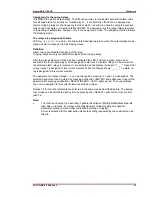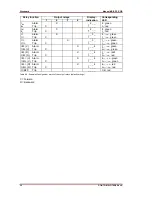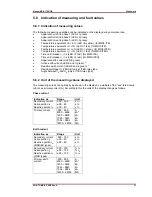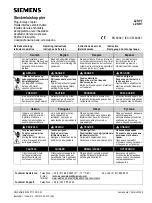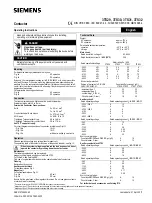
Woodward
Manual MRI3-ITER GB
22
DOK-TD-MRI3 ITERE Rev.A
In compensated mains the earthfault direction cannot be determined from the reactive current
components because the reactive part of the earth current depends upon the compensation level of
the mains. The ohmic component of the total cur-rent (calculated by cos
adjustment) is used in
order to determine the direction.
The resistive component in the non-faulted line is in phase with the residual voltage, while the re-
sistive component in the faulted line is opposite in phase with the residual voltage.
By means of an efficient digital filter harmonics and fault transients in the fault current are sup-
pressed. Thus, the uneven harmonics which, for instance, are caused an electric arc fault, do not
impair the protective function.
4.7 Demand imposed on the main current transformers
The current transformers have to be rated in such a way, that a saturation should not occur within
the following operating current ranges:
Independent time over current
function:
K1
=
2
Inverse time over current function:
K1 = 20
High-set function:
K1 = 1.2 - 1.5
K1 = Current factor related to set value
Moreover, the current transformers have to be rated according to the maximum expected short cir-
cuit current in the network or in the protected objects.
The low power consumption in the current circuit of MRI3-ITER, namely <0,2 VA, has a positive ef-
fect on the selection of current transformers. It implies that, if an electromechanical relay is re-
placed by MRI3-ITER, a high accuracy limit factor is automatically obtained by using the same cur-
rent transformer.




























